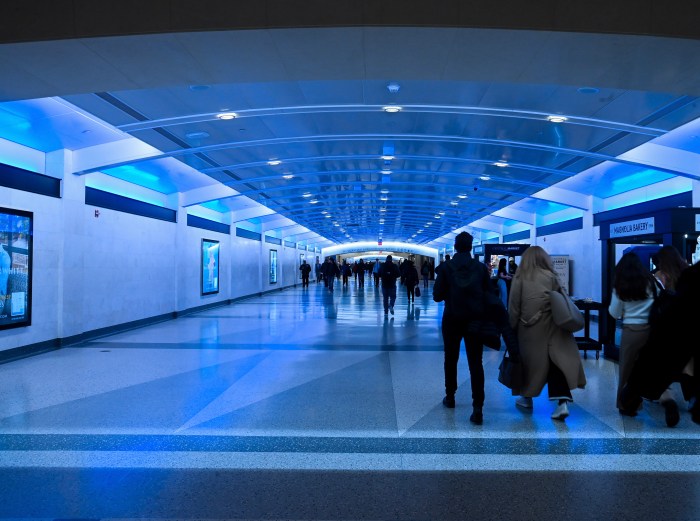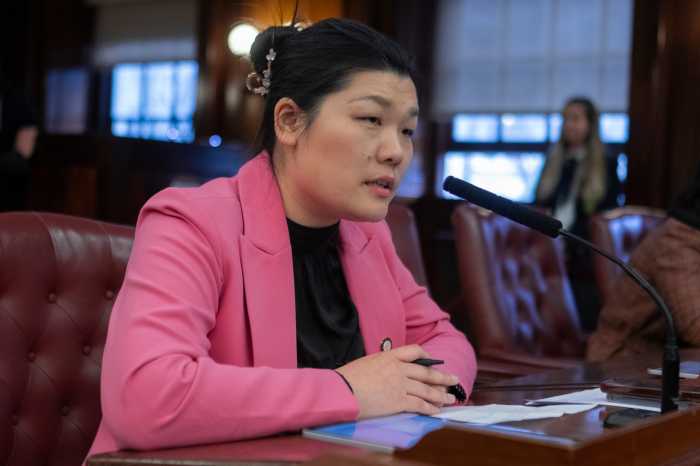
The MTA would be forced to install elevators at any subway station undergoing a closure or renovation of at least six months under a new state bill.
Introduced this week, the legislation aims to remedy the fact that New York City’s subway system features among the lowest percentage of wheelchair-accessible stations in the world — just about a quarter of the MTA’s 472 subway stations include elevators.
“Right now most New Yorkers who have physical disability; who maybe are elderly; who have problems with their knees; who have baby carriages can’t use the subways,” said Jeffrey Dinowitz, the Bronx Assemblyman who has sponsored the bill, at a news conference Monday.
“We want to see many more stations become accessible and we want to see that happen as quickly as possible,” he continued.
The MTA, via NYC Transit President Andy Byford, has more recently promised to make accessibility a top priority, along with improving subway reliability and bus speeds. The bill would also codify some of those accessibility-related commitments, including Byford’s pledge to install elevators at 50 stations under the authority’s next five-year capital plan for 2020 to 2024 as well as his goal of bringing elevators to another 130 stations in the following five years.
The lawmakers targeted their frustration at the MTA’s controversial Enhanced Station Initiative. The billion-dollar program which Gov. Andrew Cuomo unveiled back in 2016 brought long-term closures to stations to provide what critics considered purely cosmetic improvements — new lighting, tiling, artwork and fare gates — without also installing elevators.
A lawsuit filed against the MTA Wednesday argues that such renovations, where usability was impacted, is in direct violation of Title II of the Americans with Disabilities Act.
The news conference announcing the legislation was held outside Manhattan’s 72nd Street B/C station, one of the dozens of stations that had undergone the renovations under the initiative.
“[The station] was closed down for six-and-a-half months — no accessibility upgrades were provided or installed at that station. Why? It doesn’t make any sense,” said State Sen. Andrew Gounardes, voicing frustration with an ESI subway station rehabilitation in his Bay Ridge district, as he voiced support for the legislation alongside Assemb. Robert Carroll, also of Brooklyn.
The MTA has argued that the ESI program did provide both critical structural renovations to the selected stations and new ADA-compliant components, such as hand rails and station booths, and that elevator installations would add tens of millions in costs to the improvements if the instillation was feasible at all.
Money was a central point in the MTA’s response to the legislation. Byford has committed to adding an additional 50 stations through the next capital program, expected to be unveiled soon.
That plan has been anticipated to cost around $60 billion, and it’s not clear whether the MTA will get funding needed to carry out all its initiatives. As of Thursday, there is an estimated $25 billion in funding toward that capital plan, through the new taxes and congestion pricing policy Gov. Cuomo secured in the station budget.
“We welcome all the support we can get from elected officials to fund a modern subway system and help us improve accessibility, starting with ensuring that the next MTA capital plan is fully funded,” said Shams Tarek, an MTA spokesman, in a statement. “The recent approval of central business district tolling is a huge step forward, but much more funding will be needed to become accessible systemwide and fully modernize all of our services. There are many challenges to a fully accessible system which we are fully committed to taking on, and we look forward to discussing this with legislators and the public.”




































